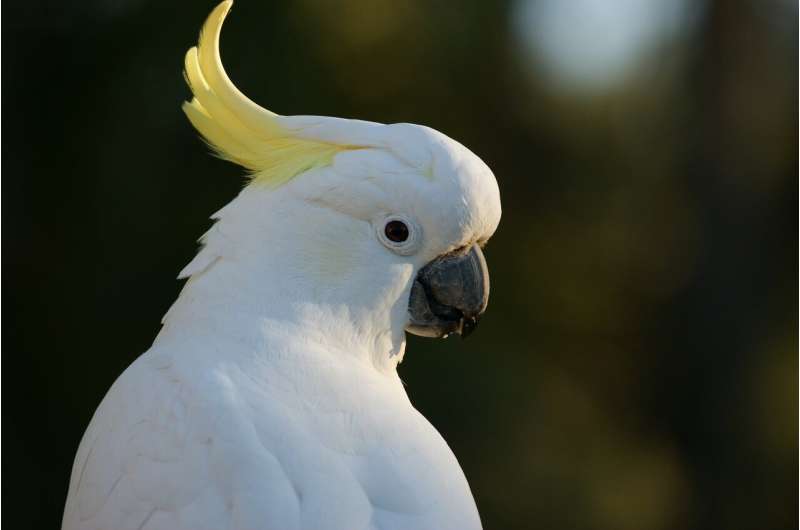Snowball the dancing cockatoo has many moves

A sulphur-crested cockatoo named Snowball garnered YouTube fame and headlines a decade ago for his uncanny ability to dance to the beat of the Backstreet Boys. Now, researchers reporting in Current Biology on July 8 are back with new evidence that Snowball isn't limited in his dance moves. Despite a lack of dance training, new videos show that Snowball responds to music with diverse and spontaneous movements using various parts of his body.
The finding is more than an entertaining novelty act. It suggests that dancing to music isn't an arbitrary product of human culture but a response to music that arises when certain cognitive and neural capacities come together in animal brains, the researchers say.
"What's most interesting to us is the sheer diversity of his movements to music," says senior author Aniruddh Patel, a psychologist at Tufts University and Harvard University, noting that Snowball developed those moves—much richer than the head bobbing and foot lifting they'd studied before—without any training.
Patel's earlier study, also published in Current Biology (DOI: 10.1016/j.cub.2009.03.038), confirmed that Snowball could move to the beat. That was notable in part because dancing is a natural ability in humans that's absent in other primates. Soon after that study, Snowball's owner and an author on the new paper, Irena Schulz, noticed that Snowball was making movements to music she hadn't seen before.
This gave the researchers the chance to study another potential similarity between Snowball's movements and human dancing: diversity in the movements and body parts used when responding to music. To quantify Snowball's movement diversity, Patel's team filmed Snowball grooving to two classic hits of the eighties: "Another One Bites the Dust" and "Girls Just Want to Have Fun." They played each of the tunes for him three times for a total of 23 minutes.
At the time, Snowball was 12 years old and had not danced to those songs with anyone other than his owner. During filming, Schulz was in the room shouting an occasional "Good boy." But Snowball was the only one in the room dancing.
To analyze Snowball's movements, the study's first author R. Joanne Jao Keehn, a cognitive neuroscientist and a classically and contemporarily trained dancer, used frame-by-frame analysis with the audio muted. She focused on each "dance movement" or sequence of repeated movements. The movements of interest were clearly intentional, but they weren't an efficient means for Snowball to achieve any plausible external goal.
All told, the video captured Snowball completing a diverse repertoire of 14 dance movements and two composite movements. He bobs, swings, and circles his head around in several different ways, sometimes in coordination with foot lifts or other movements (see video).
Unlike the way humans normally dance, Snowball tended to dance in snippets of about three or four seconds. Each time he heard a particular tune he danced a little differently, a sign of flexibility and perhaps even creativity.
Snowball isn't the first parrot to move to the music, but there has been uncertainty about how such moves are acquired. The researchers propose that the reason humans and parrots share a natural ability to dance may arise from the convergence of five traits: (1) vocal learning, (2) the capacity for nonverbal movement imitation, (3) a tendency to form long-term social bonds, (4) the ability to learn complex sequences of actions, and (5) attentiveness to communicative movements.
For humans, dancing is a form of social interaction. People more often dance with other people than they do alone. Patel says they are currently analyzing data from an experiment designed to find out whether the same is true of Snowball.
More information: Current Biology, Jao Keehn et al.: "Spontaneity and diversity of movement to music are not uniquely human" www.cell.com/current-biology/f … 0960-9822(19)30604-9 , DOI: 10.1016/j.cub.2019.05.035
Aniruddh D. Patel et al. Experimental Evidence for Synchronization to a Musical Beat in a Nonhuman Animal, Current Biology (2009). DOI: 10.1016/j.cub.2009.03.038
Journal information: Current Biology
Provided by Cell Press




















